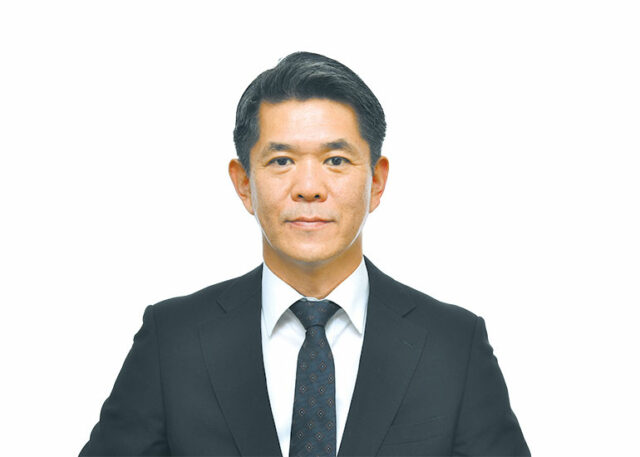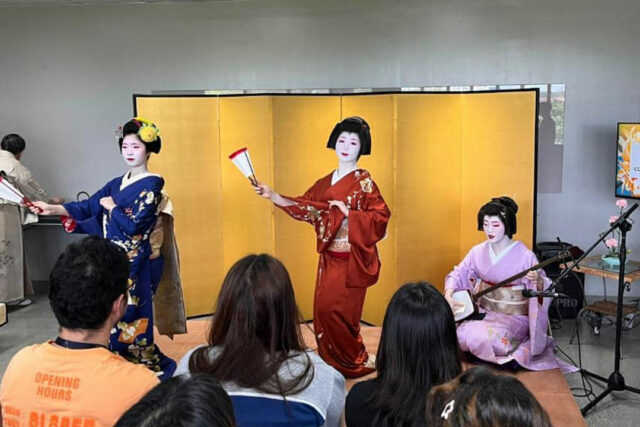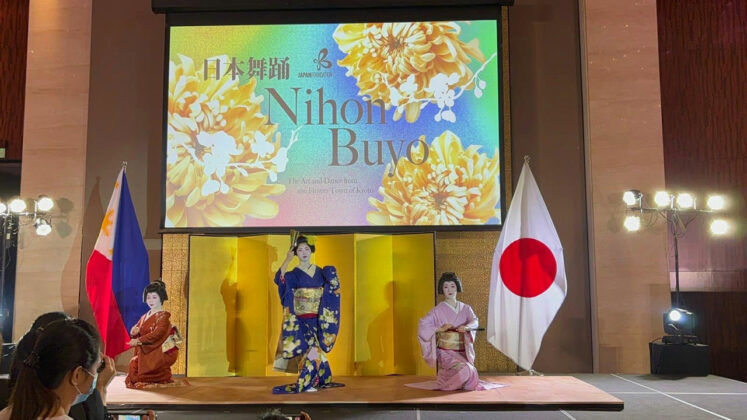To our golden age and beyond
By Kazuya Endo, Japanese Ambassador to the Philippines
Today, as we celebrate the 65th birthday of His Majesty the Emperor, I am honored to share the joy of the Japanese people with Filipino friends. In the past one year, His Majesty the Emperor has been fully dedicated to the country and its people, sharing joys and sorrows, and has been actively engaged in international goodwill, including the state visit to the United Kingdom.
I clearly remember the deep emotion of that day when I presented my credentials, attested by His Majesty the Emperor, to His Excellency President Ferdinand Marcos, Jr. on April 4 last year. This marked the official start of my duties as Ambassador to the Philippines. The immense warmth of the day of the presentation in Manila was a very memorable contrast to the exceptionally heavy snowy day in Tokyo, February 5, 2024, when the Ceremony of Appointment of Official with Imperial Attestation was held.
From my first vivid encounters with so many Filipino acquaintances and various official, social, cultural events to the glistening yoke of my first balut or durian, my tour in this country thus far has been filled with unforgettably golden experiences. It has been said that Japan and the Philippines have entered a “golden age” in their relations, and my time here in this country can certainly attest to that sentiment.
Almost a year has passed since, and I remain in awe of the mounting developments in our countries’ ties. During that same time, I have witnessed Japan-Philippines relations make remarkable progress in various fields of cooperation, a host of which I fondly look back and write on.
Security Cooperation
Some of the highlights included the deepening Japan-Philippines security cooperation and Japan-Philippines-U.S. trilateral cooperation. The historic first Japan-Philippines-U.S. Summit was held shortly after the start of my duty in April. The Maritime Cooperative Activity among like-minded countries also started in the same month. The Japan-Philippines Reciprocal Access Agreement (RAA) was signed during the Second Japan-Philippines Foreign and Defense Ministerial Meeting (“2+2”) last July 2024, and was unanimously approved by the Philippine Senate in December of the same year. Once the agreement comes into effect, it is expected to facilitate the implementation of cooperative activities between the Japan Self-Defense Forces (JSDF) and the Armed Forces of the Philippines (AFP), encompassing joint training and disaster relief.
On a separate note, documents were also signed and exchanged last December regarding Official Security Assistance (OSA). It marked the second OSA grant Japan has committed to the Philippines. To the Armed Forces of the Philippines (AFP), Japan will provide the Philippine Navy (PN) with Rigid-Hulled Inflatable Boats (RHIBs), Coastal Radar Systems, and Automatic Identification Systems (AIS) equipment for C-90 aircrafts. In addition, to the Philippine Air Force (PAF), Japan will provide equipment related to the Air Surveillance Radar System that Japan delivered to the PAF, signifying the first transfer case of finished defense equipment. We will make steady progress on those provisions.
During his visit in January of this year, Minister for Foreign Affairs Iwaya Takeshi paid a courtesy call on President Ferdinand Marcos, Jr. and held a meeting with Secretary for Foreign Affairs Enrique Manalo. Minister Iwaya stressed the growing importance of cooperation among like-minded countries when divisions and conflicts in the international community remain increasingly serious. He also highlighted the need for our bilateral and trilateral cooperation toward the realization of a “Free and Open Indo-Pacific (FOIP)”. On the heels of this visit, Minister of Defense Nakatani Gen will also be visiting the Philippines from February 22 to 24, 2025. Japan-Philippines security ties are expected to be further strengthened through his visit.
 Economic Cooperation
Economic Cooperation
On the economic front, Japanese companies are showing increased interest in the Philippines, with the latter experiencing continued economic growth in recent years. The relaxed foreign investment restrictions in various sectors, coupled with an abundant labor force with high English proficiency, provide incentives for Japanese companies to invest in the Philippines. It is worthy to note that the Philippines also has the largest number of UNIQLO and Daiso stores in Southeast Asia; Nitori, a furniture and interior design company, also opened its first store in Mitsukoshi, BGC, right after I was assigned to the Philippines. I hope that the recent enactment of the CREATE MORE Act will further promote Japanese investment in the Philippines to grow over the years. In the medium and long term, I also expect investment from the Philippines to Japan to increase, deepening our economic relations in both directions.
Japan has been by far the largest bilateral donor of Official Development Assistance for more than half a century supporting various sectors, especially infrastructure development, throughout the Philippines. An outstanding example is the “Japan-Philippines Friendship Road,” which Japan started in 1968 as its first ODA loan project to the Philippines.
We have also cooperated in improving the public transportation network in the Philippines, providing financial and technical assistance for the Metro Manila Subway Project (MMSP) and the North-South Commuter Railway (NSCR). Last October, I attended the Viaduct Span Connection Ceremony for the North-South Commuter Railway, a project which supports the development of a 38-kilometer section of the commuter rail line from Malolos City, Bulacan, to Tutuban, Metro Manila. I also visited the construction site of Metro Manila Subway on several occasions. It is my hope that these projects will help alleviate traffic congestion in urban areas and provide a more comfortable quality of life for Filipino friends.
Dialogues in the economic, social and environmental field are also actively held. On the next morning of my arrival in Manila, on March 15, 2024, even before I unpack my luggage, I attended the 40th annual meeting between the Philippines-Japan Economic Cooperation Committee Inc. and its counterpart. Since then, I had the honor of attending so many dialogues and events. A recent initiative I wish to bring to the fore is “the Japan-Philippines Environment Week.” Both government officials and private companies from both Japan and the Philippines participated in presentations and booth exhibits related to environmental technologies, including climate change countermeasures and waste management. It was a truly momentous opening of the Environment Week on January 14, 2025, together with Ministry of Environment State Minister, Kobayashi Fumiaki, and Department of Environment and Natural Resources (DENR) Secretary Maria Antonia Yulo-Loyzaga. During its period of rapid economic growth, Japan has had a long history of fighting pollution and advancing environmental technology. As the Philippines is currently experiencing remarkable economic development, I believe that this is an area where we can cooperate further with the Philippines.
With its diverse partnerships, Japan will continue to support the infrastructure development in the Philippines in line with President Marcos’ Build Better More policy, as well as the Philippine Development Plan (PDP).
Support for Mindanao Peace Process
The Japanese government has continuously supported the Mindanao peace process over the past 20 years. For this reason, I chose Cotabato City, last June 2024, as my first official trip destination out of Luzon since the start of my service in this country. Since then, I had multiple opportunities to meet with the leaders of both the Philippine government and the Moro Islamic Liberation Front, who have had numerous dialogues tenaciously to bring about peace and stability to the Bangsamoro region. As the first Bangsamoro parliamentary election, a major milestone in the peace process, is to take place, we will continue to strongly support the progress of the peace process under the principle of “human security.”
People-to-People Exchange
On an exciting note, we are but months away from Expo 2025 held from April 13 to October 13, 2025 in Osaka, Kansai, Japan. Since the COVID-19 pandemic, people-to-people exchanges between Japan and the Philippines have become increasingly active, with over 800,000 Filipinos visiting Japan in 2024. Auspiciously timed, I was delighted to attend the ceremony to commemorate the inauguration of Cebu Pacific’s new route between Chitose, Hokkaido and Manila in January this year, and the resumption of Philippine Airlines flights from Cebu to Osaka last December. With lovely Osaka awaiting eager visitors and preparations underway for the Philippine Pavilion, we hope lively scores of Filipinos will come to see this breathtaking and historic event.
Needless to say, people-to-people exchange is the foundation of our two countries’ bilateral relations. In order to continue strengthening our robust ties, we are currently making preparations for the establishment of a Visa Center that will further streamline the examination process, while maintaining quality. With enhanced efficiency in visa processing on the horizon, we hope that Filipinos will continue to experience and enjoy the vast attractions Japan has to offer.
 Conclusion
Conclusion
Next year, in 2026, Japan and the Philippines will celebrate the 70th anniversary of the normalization of our diplomatic relations in 1956. With this in mind, I am determined to continue promoting Japan-Philippines relations in a wide range of fields, building fervently on this extraordinary milestone.
This year alone, I have been able to visit Isabela and Davao and experience them in all their splendor. In Isabela, I tried (and very much enjoyed!) traditional Filipino food, including the famed Filipino delicacy, balut, for the very first time. On my trip to Davao, in addition to my first trial of Durian, I inspected the Davao City Bypass Construction Project and visited the Mindanao Kokusai Daigaku and the IMIN Museum. I was deeply impressed at the warm hospitality of the students and the Nikkei Jin community. I also had the opportunity to personally listen to the compelling stories of the pre-war Japanese community and the post-war suffering of the remaining Nikkei Jin.
As I continue to carry on my duties, I look forward to continuing to work earnestly on various issues, including assisting the Nikkei community, as well as experiencing the fascinating culture and interacting with more people in various parts of the Philippines. With all these marvelous provinces in the Philippines, these visits motivate me to discover more of the country’s rich and diverse beauty.
































